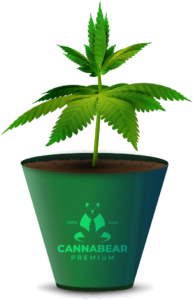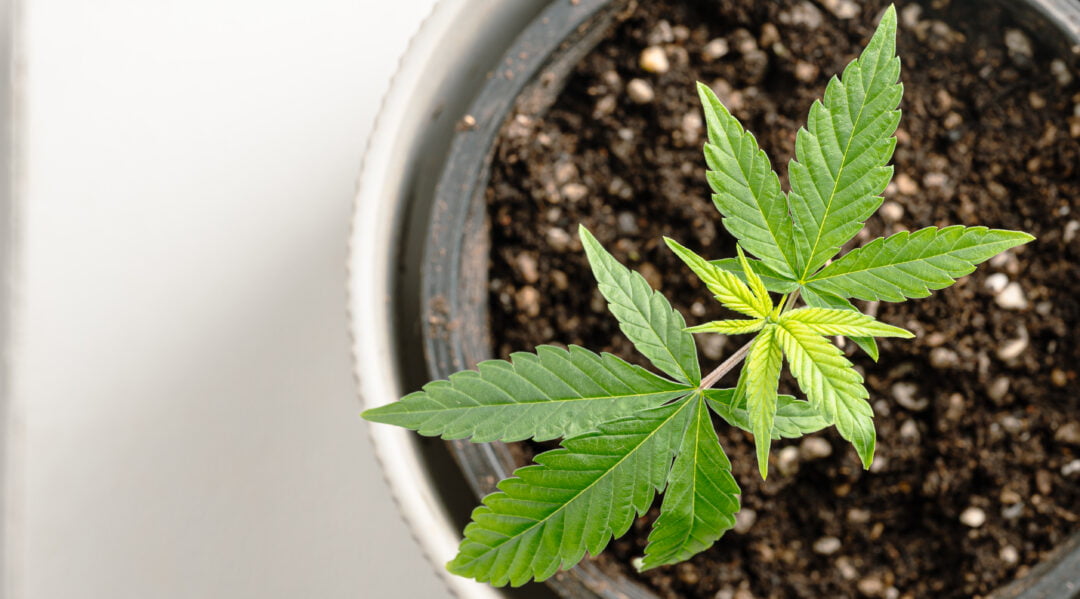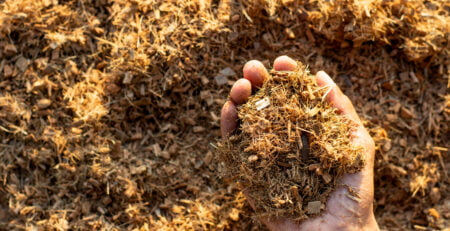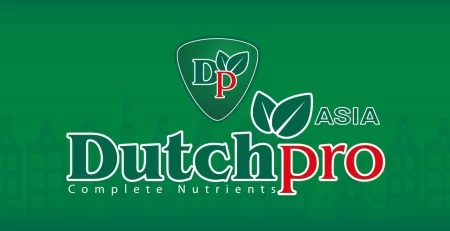Choosing the right container for Cannabis plants

Ensuring your beauties have a reliable and safe container is an important but often overlooked task. The type of container you choose, its material, and size all have a significant impact on the way your plant grows.
Cannabis grow containers come in all shapes and sizes and are made from all kinds of materials. If you need to save, you could simply buy simple plastic containers from the 1 euro shop. Or you can opt for air pots or other more sophisticated planters for your grow. What are the advantages and disadvantages of the different types of pots? Which one should you get? And what size is right for your plants? Well, let’s find out!
HOW TO DETERMINE THE RIGHT POT SIZE
How To Determine The Right Pot Size Of Cannabis
Perhaps the most important thing when choosing containers for your cannabis is size. Cannabis develops particularly long roots that need ample room to really thrive. Growing cannabis in a container that is too small can cause ring roots in your plants, resulting in stunted growth.
In a typical cannabis plantation, container sizes vary between 4 and 14 litres. The exact size you choose will depend on the strain you’re growing (the bigger the plant, the more space it needs) and your available space.
A pot that is too small will negatively affect the growth of the plant and ultimately your yield. But a planter that’s too big won’t really be of any use unless your plant has the potential to fill it.
It is important that the roots of your cannabis never run out of space. As a rule of thumb, it’s best to choose the largest containers that fit in your growing space. That way, you never have to worry about your cannabis developing ring roots.
The following list represents the theoretical ideal volume your cannabis plant needs based on its age:
- 0-1 week seed cubes
- 1-6 weeks 10cm pot
- 6-8: Week 10L container
- 2-3 months 14L container
- 3-8 months 22L container
- 8-16 months 45L container
Note: We do not recommend repotting for autoflowers as it will put plants through a temporary shock and slow down their growth. Simply plant your seedling from its seed cube into its final pot, or sow directly into the pot itself. With photoperiod plants, it’s best to only repot a few times so as not to cause undue damage or prolong the vegetative phase too much.
Also, please note that these are just suggestions. A large format may not always be practical, especially when growing indoors. Your plants may not necessarily need these sizes to thrive, and compromises often have to be made to save space. Alternatively, outdoors you can choose to simply plant in the ground; in this way, there are no restrictions on rooting in the first place. On the other hand, you lose the flexibility to move your plants should a mishap occur, which can be extremely cumbersome or even catastrophic.
Different Types Of Containers
Next, let’s look at the different types of plant containers that are available. Consider the material the pot is made of – such as plastic, clay, wood, metal and even plant fiber. Keep in mind, however, that no one container material is “best” as each has its pros and cons.
Clay pots (terracotta pots), for example, will rob your soil of moisture, requiring you to water more. Metal containers can rust, retain too much heat and even cause contamination. Wooden containers are really good for cannabis, but they tend to be very large and expensive. The most common choice is plastic pots. These are inexpensive, durable and clean. They’re nothing special, but they serve their purpose.
PLASTIC POTS
Plastic pots of cannabis
You can get plastic pots pretty much anywhere for cheap. Aside from the size considerations mentioned above, there isn’t much you need to consider when looking to find a plastic container for your cannabis.
When growing cannabis indoors, you may want to opt for rectangular pots rather than the standard round ones. While the latter is perfectly fine, rectangular pots allow you to make better use of your available grow space. Some rectangular cannabis planters are particularly deep. These are good for maximizing the growth of individual specimens as the roots can go deeper and the plants can grow taller.
One consideration when growing outdoors: opt for white pots as they retain less heat than black or grey containers.
ADVANTAGES:
- Inexpensive
- You can easily poke holes in it
- Available in many sizes and colours
DISADVANTAGE:
- Not very robust can crack.
- Does not protect roots from extreme temperatures.
Cloth Pots AKA Smart Pots for Cannabis
Fabric pots, also known as “smart pots”, are plant containers made from plant-based materials. When the roots reach the sides of the pot, they are trapped in the porous fabric and naturally trimmed by the outside air. This “air pruning” actually encourages root growth and prevents ring roots (meaning they don’t outgrow their pots). Another advantage of fabric pots is that their porous structure makes it almost impossible to overwater your plants.
The main disadvantage of cloth pots is that they dry out faster than ordinary pots. You will need to water them more frequently or use larger pots with more soil to keep this from happening. Fabric pots are also less robust than normal planters. Since they are more like sacks, they can tip over more easily.
ADVANTAGES:
- Promote a healthy root system
- Roots have better access to air and oxygen
- Much harder to overwater
DISADVANTAGE:
- Pots dry out quickly
- can tip over
CLAY POTS (Terracotta Pots)
When you source these regular classic flower pots, you’re going to want to get them along with a matching trivet. The saucer catches the water that runs off under the pot.
One thing to know about this type of pot is that it must have drainage holes at the bottom to avoid waterlogging. Not all pots are equipped with holes; many times you will have to pierce them yourself before growing your plants. If you’re working with plastic, this is much easier, and with fabric pots it’s not necessary. Save yourself the hassle of breaking your containers by purchasing clay pots with pre-drilled holes.
Terra-cotta or clay planters are heavier than plastic pots, but they can be a good choice because terra-cotta can absorb and retain excess moisture. This provides a cooling effect that will benefit your plant’s roots during the hot summer months. Minor downside: You might have to water more often.
ADVANTAGES:
- Natural cooling effect
- aesthetics
- Heavy weight can support sturdy plants
DISADVANTAGE:
- Drilling holes can be difficult
- High weight makes it difficult to move the plants
Air Pots for Cannabis
Air pots are similar to smart pots. By air pruning the roots, Air Pots prevent ring roots while also supporting optimal growth. The difference is that air pots are made out of plastic with openings on the sides instead of some kind of fabric.
Although they greatly benefit the growth of your cannabis plants in the aforementioned ways, air pots share the same disadvantages as fabric pots. You will need to water more frequently as water seeping through the sides can dry out the soil faster. The positive is that they are sturdier than cloth pots. Note: If you’re growing indoors, you may want to place air pots on large saucers to collect runoff.
ADVANTAGES:
- Healthy roots due to air pruning
- Good drainage
DISADVANTAGE:
- Expensive
- Require more watering
TIPS FOR GROWING CANNABIS IN POTS
Regardless of the type you choose, here are some final tips for growing cannabis in pots:
SEPARATE THE PLANTS
Ideally, you’ll want to use one container for each plant. This avoids competition among root systems and allows you to care for each plant individually. One plant per pot will also make repotting easier later on. If the soil in a pot is contaminated, overwatered/overfertilized, infested with pests, etc., the rest of your plants won’t suffer if each plant gets its own pot.
MAKE SURE YOUR POTS HAVE HOLES IN THE BOTTOM
Unless you know your cannabis very well and can accurately estimate how much water each plant needs, it’s best to buy a container with holes/perforations in the bottom. In fact, you should still make your life easier by opting for holes, even if you know exactly how much they need. This allows excess water to drain, and oxygen to flow through the growing medium, reducing the likelihood of root rot – a problem that occurs when the soil is left too wet for too long.
GET SUITABLE COASTERS FOR YOUR POTS
By placing your containers on saucers, you can catch the runoff and ensure your plants don’t get waterlogged. Choose saucers large enough to catch all the runoff that comes out of the bottom and possibly the sides of your pots. You can even place a large bowl under several pots to make your work easier. Just make sure to empty the coasters regularly!
Happy growing!




